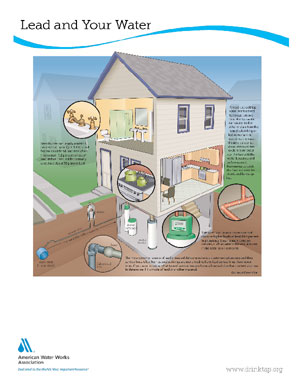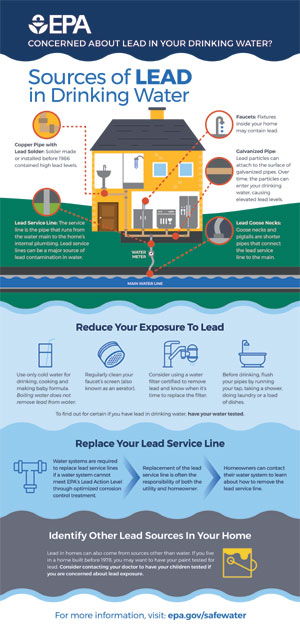Our entire focus every day is to provide safe drinking water. Water leaving our Forest Park Water treatment facility is always free of lead. To minimize the possiblity of lead dissolving into the water once it leaves our plant, we add orthophosphate during the treatment process. Orthophosphate forms a protective coating inside wataer pipes, service lines and your home’s plumbing. This prevents water from coming in contact with the pipe material, reducing the likelihood of lead being dissolved into the water supply. In addition, keeping the water pH above 7 adds to controlling corrosion.
But public water systems and their customers share in the responsibility of reducing the potential of exposure to lead through drinking water.
What can I do to reduce my exposure to lead?
This short video gives you an overview of what’s involved.
Locate Your Water Service Line
Your water service line brings water into your home from our water main in the street. Click here to download detailed instructions for finding your water service line. Service lines typically enter the home in the basement or crawl space.
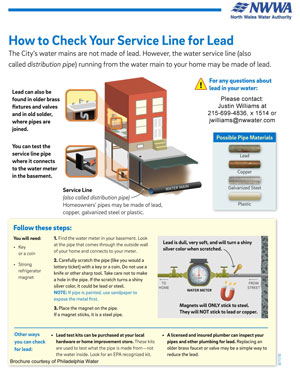
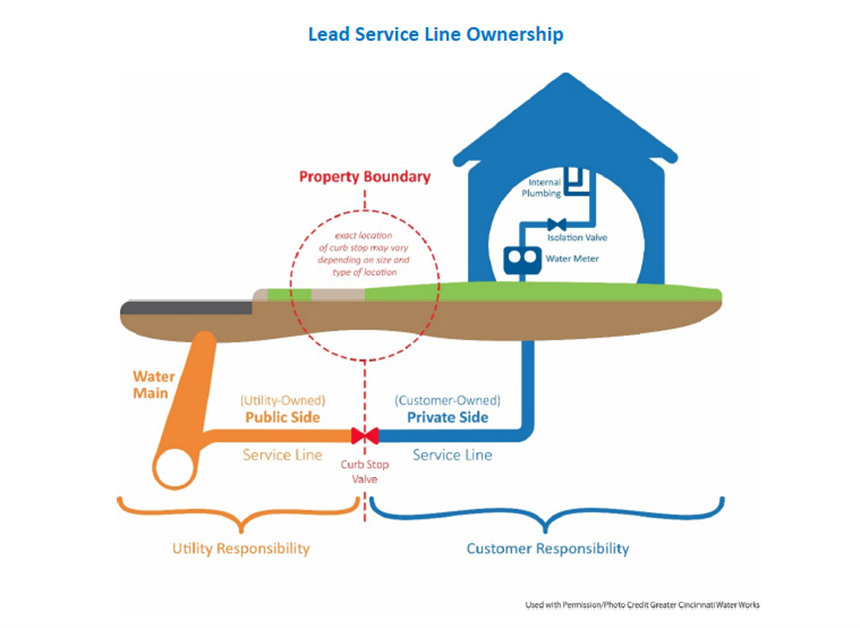
Once you’ve located your water service line, you may use one of our Lead Check test kits to see if it’s made of lead. Click here to download instructions for conducting the test.
Because your water service line is on your property, you own it and are responsible for it. If you have a confirmed galvanized or lead service line, you have the option to participate in our Service Line Replacement Program. Click here for the details.
You may also want to check to see if there is lead in the solder of your pipes. Click here to download instruction for testing your solder for lead.
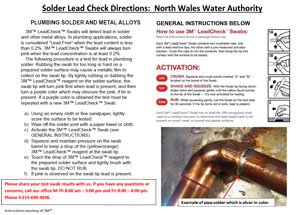
Have Your Water Tested
The presence of lead piping does not automatically mean there is lead in your water. If you have confirmed either lead pipes or lead solder in your home, contact us to have your water tested for the presence of lead. If you do not have lead components in your home, but would still like your water tested, we can provide you with a list of laboratories that would be able to assist you.
Also, be sure to sign up for our Lead and Copper Monitoring Program, which is free. Sign up here
Next Steps
If your tap water tests positive for lead, here are a few easy steps you can take right now:
- Use a Filter – Several types of inexpensive household water filters are effective at removing lead. Before purchasing, look for a certification from the NSF International that verifies the filter’s ability to remove lead. It will usually be found on the packaging.
- Run the Tap Before Use – Lead levels are likely at their highest when water has been sitting in the pipe for several hours. Clear this water from your pipes by running the cold water for several minutes, which allows you to draw fresh water from the main in the street. You can use this water on house plants or to flush toilets.
- Use Cold Water for Cooking – Always cook and prepare baby formula with cold water, because hot water dissolves lead more quickly, resulting in higher levels in water.
- Clean aerators – Aerators are small attachments at the tips of faucets which regulate the flow of water. They can accumulate small particles of lead in their screens. It’s a good idea to remove your aerators at least monthly and clean them out. Click here for more detailed instructions.
Check out these additional resources for additional information about lead in homes.
Get the Lead Out
The surest way to protect against lead in water is to get the lead out altogether. That means replacing lead service lines and replacing other plumbing that contains lead
